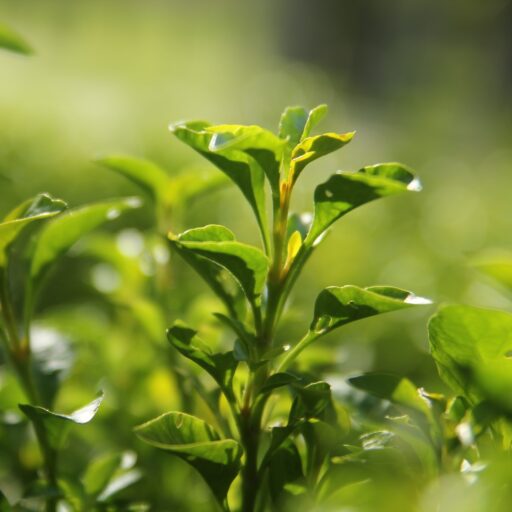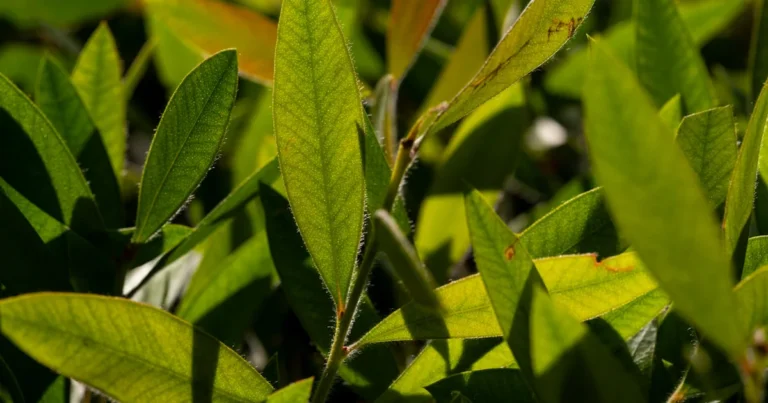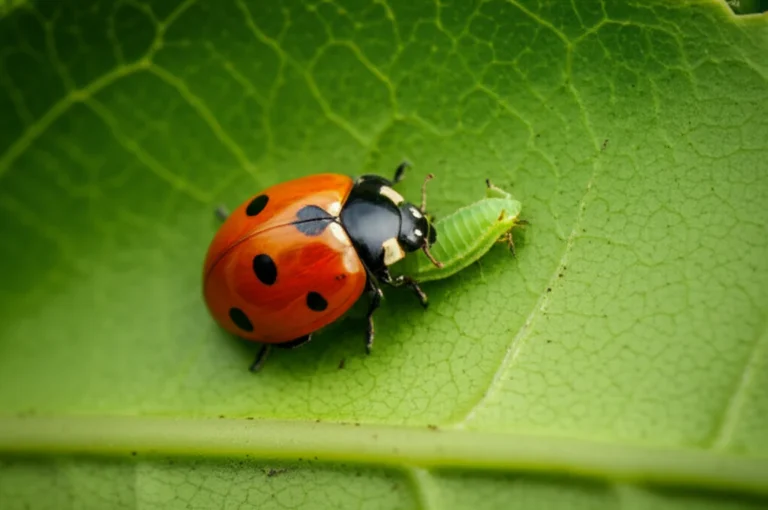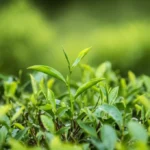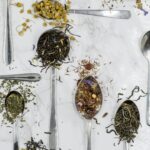Support our educational content for free when you purchase through links on our site. Learn more
What Are the 14 Most Common Pests & Diseases That Wreck Tea Plants? 🍃 (2025)
Imagine waking up to find your prized tea bushes looking like they’ve been through a battlefield—leaves spotted, curled, or mysteriously vanishing overnight. What’s lurking in your garden, silently sabotaging your harvest? At Growing Teas™, we’ve battled these foes firsthand and uncovered the 14 most common pests and diseases that threaten tea plants worldwide. From the sneaky Tea Mosquito Bug to the devastating Blister Blight fungus, this guide dives deep into identifying, managing, and outsmarting these adversaries so your tea garden thrives year after year.
Did you know that some pests like the Red Spider Mite can complete their life cycle in just two weeks, turning a minor nuisance into a full-blown infestation before you even notice? Or that fungal diseases such as Blister Blight can wipe out entire crops during humid monsoon seasons? Stick around as we reveal expert tips, biological controls, and integrated pest management strategies that will empower you to protect your tea plants naturally and effectively.
Key Takeaways
- 14 major pests and diseases threaten tea plants, including insects, fungi, bacteria, and viruses.
- Early detection and regular monitoring are critical to catch problems before they escalate.
- Integrated Pest Management (IPM) combining cultural, biological, and, if necessary, chemical controls offers the most sustainable defense.
- Beneficial insects like ladybugs and predatory mites are invaluable allies in pest control.
- Proper pruning, soil health, and sanitation dramatically reduce disease outbreaks.
- Climate and weather patterns heavily influence pest and disease pressure, requiring adaptable strategies.
Ready to become a tea-growing warrior? Let’s dive in!
Table of Contents
- ⚡️ Quick Tips and Facts About Tea Plant Pests and Diseases
- 🌱 Tea Plant Health 101: Understanding Common Pests and Diseases
- 🐛 1. Insect Pests That Threaten Your Tea Garden
- 🍄 2. Fungal Diseases That Can Wreck Your Tea Crop
- 🦠 3. Bacterial and Viral Diseases Impacting Tea Plants
- 🌿 4. Root and Stem Diseases: The Hidden Killers
- 🛡️ 5. Integrated Pest Management (IPM) Strategies for Tea Cultivation
- 🔍 6. Early Detection and Monitoring Techniques for Tea Plant Health
- 🌍 7. Climate Change and Its Effects on Tea Pest and Disease Patterns
- 📚 8. Research Advances and Innovations in Tea Pest and Disease Management
- 🧰 9. Tools and Resources for Tea Growers: Pest and Disease Identification
- 🎯 Conclusion: Keeping Your Tea Plants Healthy and Thriving
- 🔗 Recommended Links for Tea Pest and Disease Management
- ❓ FAQ: Your Burning Questions About Tea Plant Pests and Diseases Answered
- 📖 Reference Links and Further Reading
Here is the body of the article, written as requested.
⚡️ Quick Tips and Facts About Tea Plant Pests and Diseases
Welcome, fellow tea enthusiasts! Here at Growing Teas™, we’ve seen it all—the good, the bad, and the downright buggy. Before we dive deep into the world of tea plant triage, here are some juicy tidbits to get you started. Think of this as the tea-ser to our main feature!
- Know Thy Enemy: The most common troublemakers in a tea garden aren’t picky eaters. They fall into a few main categories: sap-sucking insects like aphids and mites, leaf-chewing caterpillars, and insidious fungal diseases like Blister Blight.
- Mighty Mites: Don’t let their size fool you! Mites, like the Red Spider Mite, can complete their life cycle in as little as 10-14 days, quickly turning your lush green leaves into a sad, bronzed mess.
- Location, Location, Location: Pest and disease pressure varies wildly depending on your climate. High humidity is a VIP invitation for fungal parties, while dry spells can see mite populations explode.
- The Borer Menace: The Shot Hole Borer is a particularly nasty pest, with crop losses estimated to be as high as 18-40% in affected areas. Yikes!
- Prevention is Paramount: The best defense is a good offense. Healthy, well-fed plants grown in the right conditions are naturally more resilient to attacks. It’s a core principle we live by in our Green Tea Cultivation fields.
- ✅ Go Organic First: Always start with the least toxic solutions. Often, a blast of water, introducing beneficial insects, or using neem oil is enough to handle minor infestations.
- ❌ Don’t Spray Blindly: “Care must be taken to thoroughly drench the maintenance foliage and chemicals should be applied only after plucking.” This ensures you’re not spraying your next delicious cup of tea!
🌱 Tea Plant Health 101: Understanding Common Pests and Diseases
So, you’ve decided to embark on the noble journey of growing your own tea. You’ve pictured it, haven’t you? Stepping out into the morning mist, plucking perfect, dewy leaves for your morning brew. It’s a beautiful dream! But then, reality bites. Or, more accurately, something is biting your tea plants.
What gives?
Just like us, plants can get sick. They’re living organisms, and a whole ecosystem of other critters and microbes wants a piece of the action. The magnificent history of the Camellia sinensis plant is also a long story of its battle with these natural foes. Understanding the “why” is the first step to becoming a tea-growing champion.
A pest or disease outbreak is rarely a random event. It’s usually a sign that something in the plant’s environment is out of balance. This could be:
- Nutrient Deficiencies: A “hangry” plant is a weak plant.
- Water Stress: Too much or too little water can stress the roots.
- Poor Airflow: Stagnant, humid air is a breeding ground for fungi.
- Lack of Biodiversity: A monoculture of just tea plants is a buffet for pests, with no natural predators to keep them in check.
Think of your tea garden as a delicate dance. Your job is to be the best dance partner possible, anticipating your plant’s needs and gracefully leading it away from trouble.
🐛 1. Insect Pests That Threaten Your Tea Garden
Let’s meet the main cast of characters who’d love to make a meal out of your hard work. Don’t worry, we’ll also teach you how to show them the exit.
1.1 Tea Mosquito Bug (Helopeltis theivora)
This bug is the uninvited drama queen of the tea garden. Both the nymphs and adults use their piercing mouthparts to puncture tender leaves and shoots, injecting toxic saliva as they feed.
- The Damage: The result is ugly, reddish-brown spots that can merge, causing leaves to curl and shoots to die back completely. It’s a real heartbreaker to see fresh growth wither away.
- Peak Season: These pests are most active from July to December, so be extra vigilant during these months.
- Our Expert Advice:
- ✅ Monitor Closely: We recommend scouting in the early mornings or evenings when the bugs are most active.
- ✅ Prune and Clean: Remove and destroy any affected shoots and control nearby weeds that can act as hosts.
- ✅ Biological Helpers: Encourage natural predators like the Lynx spider (Oxyopes sheweta), which preys on them.
- ❌ Chemical Last Resort: If things get out of hand, insecticidal soaps can be effective. For severe infestations, products containing pyrethrins are an option.
1.2 Tea Thrips (Scirtothrips dorsalis)
Thrips are tiny, slender insects that are hard to see, but you’ll definitely see the damage they leave behind. They prefer to attack young leaves and buds, lacerating the surface and sucking up the plant juices.
- The Damage: Infested leaves develop a rough, uneven, or “bubbly” surface with corky brown lines. This can severely stunt the growth of new shoots.
- Monitoring Tip: We hang yellow sticky traps throughout our fields. They’re great for monitoring thrip populations, which tend to peak in the dry heat of February/March or April/May.
- Our Expert Advice:
- ✅ Maintain Shade: Proper shade management can help regulate the microclimate and make it less favorable for thrips.
- ✅ Introduce Predators: Predatory thrips and Anthocorid bugs are natural enemies. You can often purchase these from specialized suppliers like Arbico Organics.
- ✅ Organic Sprays: A thorough spray with a high-quality neem oil, like Natria Neem Oil, can be very effective. Ensure you get good coverage on the new shoots.
1.3 Red Spider Mites (Oligonychus coffeae)
Ah, the tiny vampires of the tea world. These aren’t insects, but arachnids, and they are one of the most common pests we face. They use their piercing mouthparts to suck the life out of individual plant cells.
- The Damage: Infestations typically start along the midrib on the upper surface of mature leaves, spreading outwards. You’ll see a characteristic ruddy bronze discoloration, and in severe cases, fine silken webbing. The leaves eventually dry up and fall off.
- Life on Fast Forward: With a life cycle of just 10-14 days, a small problem can become a huge one in no time!
- Our Expert Advice:
- ✅ Water Power: A strong jet of water can physically dislodge many mites from the leaves. It’s a simple but surprisingly effective first step.
- ✅ Acaricides are Key: For persistent problems, you’ll need a dedicated miticide (acaricide). Horticultural oils and insecticidal soaps work by smothering them. Products like Bonide All Seasons Horticultural & Dormant Spray Oil are a good choice.
- ✅ Biological Control: Predatory mites, such as Phytoseiulus persimilis, are commercially available and can be released to hunt down spider mites.
1.4 Tea Aphids and Mealybugs
These two are partners in crime. Both are sap-suckers that often appear in colonies on tender new growth, causing leaf curl and stunted shoots.
- The Telltale Sign: They excrete a sticky substance called “honeydew,” which can lead to a secondary problem: sooty mold. If your leaves look like they’ve been dusted with black powder, you’ve likely got an aphid or mealybug issue.
- Our Expert Advice:
- ✅ Ladybugs to the Rescue! Ladybugs and their larvae (which look like tiny alligators) are voracious predators of aphids. You can often buy them from garden centers or online.
- ✅ Manual Removal: For small infestations, you can simply wipe them off with a cloth or your fingers. A cotton swab dipped in rubbing alcohol works wonders on mealybugs.
- ✅ Neem and Soaps: As with other pests, neem oil and insecticidal soaps are excellent, low-impact options. The key with mealybugs is getting past their waxy, protective coating, so a wetting agent can help.
👉 Shop Pest Control Solutions:
- Neem Oil: Amazon | Walmart
- Insecticidal Soap: Amazon | Walmart
- Beneficial Insects: Arbico Organics | Etsy
🍄 2. Fungal Diseases That Can Wreck Your Tea Crop
If insects are the predators, fungi are the insidious infections. They can spread quickly, especially in damp, humid conditions, and can damage everything from the leaves to the roots.
2.1 Blister Blight (Exobasidium vexans)
This is one of the most notorious fungal diseases in tea cultivation. If you see it, you need to act fast.
- The Look: It starts as small, pale yellow, translucent spots on young leaves. These spots enlarge and then—you guessed it—form convex “blisters” on the upper leaf surface, with a corresponding concave depression underneath that turns white with fungal spores.
- The Conditions: Blister blight thrives in cool, wet, and overcast weather. It’s a classic problem during monsoon seasons.
- Our Expert Advice:
- ✅ Airflow is Everything: Prune your tea plants to open up the canopy and improve air circulation. This helps leaves dry faster, making it harder for fungal spores to germinate.
- ✅ Pluck Promptly: Regular plucking of young, susceptible shoots can help remove the disease before it produces spores.
- ✅ Fungicides: Copper-based fungicides are the standard treatment. We’ve had good results with products like Bonide Copper Fungicide. Always follow the label instructions carefully.
2.2 Grey Blight (Pestalotiopsis theae)
Grey Blight is an opportunist, often attacking leaves that are already damaged by sun scorch, insects, or mechanical injury.
- The Look: It typically appears as grayish-brown, concentric spots on mature leaves, which can eventually cause large portions of the leaf to die and fall out, creating a “shot hole” effect.
- Our Expert Advice:
- ✅ Plant Nutrition: Ensure your tea plants are well-fertilized. A balanced diet, especially with adequate potassium, can improve their resistance. This is a key part of our philosophy for growing all kinds of teas, including those for Herbal Tea Planting.
- ✅ Sanitation: Clean up and destroy fallen leaves and debris around your plants to reduce the amount of fungal inoculum.
2.3 Red Root Rot (Poria hypobrunnea)
This is a silent killer. By the time you see symptoms above ground—like yellowing leaves and dieback—the damage below ground is often severe.
- The Cause: This soil-borne fungus attacks the root system, causing it to decay. It often spreads from infected stumps of old trees left in the ground.
- Our Expert Advice:
- ✅ Prevention is the Only Cure: There is no effective chemical cure for Red Root Rot. The best strategy is prevention. When preparing a new tea plot, ensure all old tree stumps and roots are completely removed.
- ✅ Soil Health: Promote healthy, well-draining soil rich in organic matter. This encourages beneficial microbes that can out-compete pathogenic fungi.
2.4 Brown Blight and Other Leaf Spot Diseases
This is a catch-all for a variety of fungal issues like Brown Blight (Colletotrichum species) and Bird’s Eye Spot (Cercoseptoria ocellata) that cause, well, spots on the leaves.
- The Look: Symptoms vary, but generally, you’ll see distinct, often circular, lesions on the leaves that can be brown, tan, or gray, sometimes with a darker border.
- Our Expert Advice:
- ✅ Don’t Wet the Leaves: When watering, apply it directly to the soil at the base of the plant. Wet foliage is a major invitation for leaf spot diseases.
- ✅ Fungicidal Sprays: For persistent issues, a broad-spectrum bio-fungicide like Serenade Garden Disease Control, which uses a beneficial bacterium (Bacillus subtilis), can be very effective and is safe for organic gardening.
🦠 3. Bacterial and Viral Diseases Impacting Tea Plants
While less common than fungal issues for the home grower, bacterial and viral diseases can still pop up. These are tricky because there are often no direct “cures” available, making prevention and management the name of the game.
3.1 Bacterial Blight (Xanthomonas campestris pv. theicola)
This disease causes water-soaked lesions on the margins of young leaves, which eventually turn brown or black and become necrotic. It can also cause cankers on the stems.
- How it Spreads: Bacteria are often spread by splashing water from rain or irrigation, and through contaminated pruning tools.
- Our Expert Advice:
- ✅ Sanitize Your Tools: This is non-negotiable! Always disinfect your pruning shears with rubbing alcohol or a bleach solution between plants to prevent spreading disease.
- ✅ Remove Infected Parts: Carefully prune out and destroy any infected leaves or stems. Do not compost them!
3.2 Tea Mosaic Virus and Other Viral Threats
Viruses in plants are much like viruses in humans—they’re systemic and can’t be “cured” with a spray. Symptoms often include mottled or mosaic-like patterns of yellow and green on the leaves, as well as stunting and deformation.
- How they Spread: Viruses are typically transmitted by insect vectors (like aphids) or through propagation from infected mother plants.
- Our Expert Advice:
- ✅ Control the Vectors: The best way to prevent viral infections is to manage the pests that spread them. Keep your aphid populations in check!
- ✅ Source Healthy Plants: Always buy your tea plants from a reputable nursery to ensure you’re starting with disease-free stock.
- ✅ Rogue and Remove: If you confirm a plant has a virus, the kindest thing to do for the rest of your garden is to remove and destroy it. It’s tough, but it prevents further spread.
🌿 4. Root and Stem Diseases: The Hidden Killers
What happens below the soil is just as important as what happens above it. Root and stem diseases can cripple a plant before you even know what’s happening.
4.1 Root Knot Nematodes (Meloidogyne species)
Nematodes are microscopic roundworms that live in the soil. While many are beneficial, the Root Knot Nematode is a destructive pest. They invade the roots, causing the plant to form characteristic galls or “knots.”
- The Damage: These galls disrupt the root’s ability to take up water and nutrients. Above ground, the plant will look stunted and yellowed, and it will wilt easily, even in moist soil.
- Our Expert Advice:
- ✅ Healthy Soil is Key: Building your soil with plenty of compost and organic matter encourages beneficial fungi and bacteria that can parasitize harmful nematodes.
- ✅ Crop Rotation: If you have an infested area, avoid planting tea there for a few years. Planting marigolds has been shown to help reduce nematode populations in the soil.
- ✅ Neem Cake: Amending the soil with neem cake can act as an organic nematicide.
4.2 Stem Canker and Collar Rot Diseases
These diseases, caused by various fungi like Phomopsis and Rhizoctonia, attack the woody parts of the plant.
- The Damage: Cankers are sunken, dead areas on stems and branches. Collar rot occurs at the soil line, girdling the plant and cutting off the flow of water and nutrients, which is almost always fatal.
- Our Expert Advice:
- ✅ Avoid Injury: Be careful with weed whackers or other tools around the base of your plants. Wounds are open doors for disease.
- ✅ Proper Planting Depth: Don’t plant your tea too deep. The root flare should be visible at the soil line. Piling mulch up against the stem (“volcano mulching”) is a common cause of collar rot.
- ✅ Prune Correctly: When pruning, make clean cuts just outside the branch collar. This allows the plant to heal properly and wall off potential infections.
🛡️ 5. Integrated Pest Management (IPM) Strategies for Tea Cultivation
Okay, we’ve thrown a lot of scary pests and diseases at you. Feeling overwhelmed? Don’t be! Now we get to the fun part: fighting back like a pro. At Growing Teas™, we don’t just reach for the nearest spray bottle. We use a holistic approach called Integrated Pest Management (IPM). It’s a smart, sustainable strategy that prioritizes long-term prevention.
5.1 Biological Controls: Nature’s Pest Fighters
This is all about using life to fight life. Why do all the work yourself when you can recruit a tiny army?
- Predators & Parasitoids: These are the “good bugs” that prey on the “bad bugs.” We’ve already mentioned ladybugs and predatory mites. Other heroes include lacewings, syrphid flies, and parasitic wasps like Macrocentrus homonae, which was famously successful in controlling Tea Tortrix.
- Microbial Agents: This involves using naturally occurring bacteria, fungi, or viruses to target pests.
- Bacillus thuringiensis (Bt): A bacterium that is lethal to caterpillars but harmless to other insects, pets, and humans. Products like Monterey B.t. are a must-have for controlling leaf-chewing worms.
- Beauveria bassiana: A beneficial fungus that infects and kills a wide range of pests, including borers.
- Verticillium lecanii: Another entomopathogenic fungus effective against pests like thrips.
5.2 Cultural Practices to Minimize Disease Outbreaks
This is the foundation of IPM. It’s all the hands-on stuff you do in the garden to create an environment where your tea plants thrive and pests don’t.
- Site Selection: Start right! Choose a location with good drainage and adequate sunlight.
- Soil Health: We can’t say this enough. Healthy soil = healthy plants. Amend with compost and organic matter regularly.
- Pruning & Plucking: Regular pruning improves airflow (fighting fungi) and removes some pests and their eggs. “Plucking removes a large part of eggs and nymphs” of pests like jassids.
- Shade Management: Regulating the shade from nearby trees can help control mites and thrips.
- Sanitation: Keep the garden clean! Remove and destroy diseased plant material and fallen leaves.
- Watering Wisely: Water the soil, not the leaves. Water in the morning so the foliage has time to dry before nightfall.
5.3 Chemical Controls: When and How to Use Pesticides Safely
Sometimes, despite your best efforts, an infestation gets out of control and you may need to intervene with a pesticide. This should always be your last resort.
- Start with the Softest: Always begin with the least toxic options first. This includes:
- Horticultural Oils: Highly refined oils that smother soft-bodied insects like mites, aphids, and mealybugs.
- Insecticidal Soaps: Specially formulated soaps that disrupt the cell membranes of soft-bodied insects.
- Neem Oil: A fantastic multi-purpose tool that acts as a repellent, feeding deterrent, and insect growth regulator.
- Read the Label. No, Really: The label is the law. It will tell you what pests the product controls, how to apply it safely, and how long you need to wait before harvesting.
- Timing is Everything: Spray in the early morning or late evening when beneficial insects are less active and the sun won’t cause the spray to burn the leaves.
- Target Your Application: Only spray the affected plants. There’s no need to spray the entire garden “just in case.”
🔍 6. Early Detection and Monitoring Techniques for Tea Plant Health
You can’t fight what you can’t see. The single most important thing you can do for your tea plants is to spend time with them. Seriously! Grab your morning cup (perhaps one you made with our DIY Tea Blending guide?), and take a stroll through your garden.
- The 10-Second Scan: Look at your plants from a distance. Do you see any yellowing, wilting, or bare branches?
- Get Up Close and Personal: Turn over the leaves. The underside is where many pests like to hide. Look at the new, tender growth—it’s often the first place pests will attack.
- Use Simple Tools:
- A Magnifying Glass: A simple hand lens is invaluable for identifying tiny pests like spider mites.
- Sticky Traps: As mentioned, yellow sticky traps are excellent for monitoring flying pests like thrips, whiteflies, and fungus gnats.
- The White Paper Test: Hold a piece of white paper under a branch and give it a gentle shake. Mites and other tiny pests will fall onto the paper, making them easy to see.
By catching problems early, you can often solve them with a simple manual removal or a targeted spray before they become a full-blown crisis.
🌍 7. Climate Change and Its Effects on Tea Pest and Disease Patterns
This isn’t just a topic for scientists; it’s something we’re seeing in our fields right now. As weather patterns shift, so do the challenges we face.
- Pest Migration: Warmer winters are allowing some pests to survive in areas where they previously couldn’t, expanding their range.
- Increased Generations: Higher temperatures can speed up the life cycle of many insects, meaning they can produce more generations in a single season.
- Drought and Heat Stress: Stressed plants are more susceptible to pests and diseases. Periods of drought followed by intense rain can create a perfect storm for outbreaks.
What does this mean for you, the home tea grower? It means that vigilance and adaptability are more important than ever. The pest that was a minor nuisance five years ago might be a major problem today. Staying informed and practicing good IPM is your best strategy for building a resilient tea garden for the future.
📚 8. Research Advances and Innovations in Tea Pest and Disease Management
The world of tea cultivation is constantly evolving, and the fight against pests and diseases is a major driver of innovation. It’s an exciting time!
- Breeding for Resistance: Scientists and growers are working to develop new cultivars of Camellia sinensis that have natural resistance to common diseases like Blister Blight.
- Advanced Biocontrols: Research is uncovering new and more effective strains of beneficial fungi and bacteria. There’s also exciting work being done with pheromone traps, which use synthetic insect attractants to lure pests and disrupt their mating cycles.
- Smart Technology: In large-scale agriculture, drones and sensors are being used to monitor crop health and spot outbreaks from the air, allowing for incredibly precise treatment. While you might not be launching a drone over your backyard, this technology is paving the way for smarter, more targeted pest control for everyone.
Staying curious and open to new techniques is part of the joy of gardening. It ensures that we can continue to enjoy the incredible Health Benefits of Tea for generations to come.
🧰 9. Tools and Resources for Tea Growers: Pest and Disease Identification
Having the right information is just as important as having the right tools. Here are some of our go-to resources for when we encounter a mystery problem.
- University Extension Websites: Your local university’s agricultural extension service is a treasure trove of research-based, region-specific advice. Simply search for “[Your State] university extension pest identification.”
- Pest Identification Apps: Apps like PictureThis or iNaturalist can help you identify pests and diseases with a simple photo from your phone. They’re not always perfect, but they’re a great starting point.
- Visual Guides: Sometimes a short video is the best way to see what you’re up against. The quick clip embedded in this article, titled “Common Garden pest”, gives you a rapid-fire look at some of the usual suspects you might find not just on tea, but throughout your garden.
- Books: There are many excellent books on organic pest control and plant health. Look for titles by authors like Jeff Gillman or Whitney Cranshaw for reliable, science-backed advice.
🎯 Conclusion: Keeping Your Tea Plants Healthy and Thriving
Well, fellow tea cultivators, we’ve journeyed through the tangled web of pests and diseases that can threaten your beloved tea plants. From the microscopic Red Spider Mite to the stealthy Root Knot Nematode, and from blistering fungal foes to viral villains, the tea garden is a battlefield—but one you can win!
Remember our early teaser about the importance of prevention and vigilance? It’s no exaggeration. Early detection combined with Integrated Pest Management (IPM) strategies is your secret weapon. Healthy soil, proper pruning, encouraging beneficial insects, and using organic controls like neem oil and Bacillus thuringiensis will keep your tea thriving without resorting to heavy chemicals.
And if you ever find yourself staring down a Tea Mosquito Bug or a Tea Tortrix caterpillar, don’t panic! With the right knowledge and tools, you can outsmart these pests and protect your harvest.
At Growing Teas™, we wholeheartedly recommend starting with organic and cultural controls, reserving chemical interventions as a last resort. This approach not only safeguards your plants but also preserves the environment and the delicate flavors of your tea leaves.
So, keep your eyes sharp, your garden clean, and your spirits high. Your perfect cup of homegrown tea is just a few healthy leaves away! 🍃☕
🔗 Recommended Links for Tea Pest and Disease Management
Here are some trusted products and resources to help you keep your tea plants pest- and disease-free:
-
Neem Oil Concentrate:
Amazon | Walmart | Natria Neem Oil Official -
Beneficial Insects (Ladybugs, Predatory Mites):
Arbico Organics | Etsy -
Bacillus thuringiensis (Bt) Insect Spray:
Amazon | Monterey B.t. -
Bonide Copper Fungicide:
Amazon | Bonide Official -
Serenade Garden Disease Control (Bacillus subtilis):
Amazon | Bayer Official -
Books on Organic Pest Control and Plant Health:
❓ FAQ: Your Burning Questions About Tea Plant Pests and Diseases Answered
What are the best organic methods to control tea plant pests?
Organic control starts with prevention: maintaining healthy soil, proper pruning, and good garden hygiene. Introducing beneficial insects like ladybugs, predatory mites (Phytoseiulus persimilis), and parasitic wasps (Macrocentrus homonae) helps keep pest populations in check naturally. Neem oil is a versatile organic pesticide that disrupts insect feeding and reproduction. Insecticidal soaps and horticultural oils physically smother soft-bodied pests like aphids and mites. For caterpillars, Bacillus thuringiensis (Bt) is a safe, effective microbial insecticide. Remember, organic methods require patience and consistency but protect your tea’s flavor and the environment.
How can I identify early signs of diseases in tea plants?
Early detection hinges on regular inspection. Look for:
- Discoloration: Yellowing, browning, or unusual spots on leaves.
- Deformation: Curling, blistering, or curling of leaves and shoots.
- Wilting: Even when soil moisture is adequate.
- Unusual growths: Galls on roots or cankers on stems.
- Presence of pests: Eggs, larvae, or webs on leaves or stems.
Use tools like a magnifying glass and yellow sticky traps to spot tiny pests. Early signs often appear on young, tender growth. Catching issues early allows for targeted, less toxic interventions.
What natural predators help manage tea pests in home gardens?
Several beneficial organisms help keep tea pests in balance:
- Ladybugs (Coccinellidae): Voracious aphid eaters.
- Predatory Mites (Phytoseiulus persimilis): Target spider mites.
- Lacewings: Larvae consume aphids, thrips, and caterpillars.
- Parasitic Wasps (e.g., Macrocentrus homonae): Attack caterpillar pests like Tea Tortrix.
- Syrphid Fly Larvae: Aphid predators.
- Spiders (e.g., Lynx spider): Generalist predators, including Tea Mosquito Bug.
Encourage these allies by planting diverse flowering plants nearby and avoiding broad-spectrum insecticides.
How do weather conditions affect tea plant diseases?
Weather is a major factor:
- High humidity and prolonged leaf wetness favor fungal diseases like Blister Blight and Grey Blight.
- Cool, wet conditions promote fungal spore germination and infection.
- Dry, hot weather can increase mite populations, as natural enemies decline.
- Fluctuating moisture levels stress plants, making them more susceptible to pathogens.
- Climate change is shifting pest and disease patterns, sometimes increasing outbreak frequency.
Managing microclimate through pruning, shade regulation, and proper watering helps mitigate these risks.
What are the most effective treatments for fungal infections in tea plants?
For fungal diseases, cultural controls like pruning for airflow and sanitation are first-line defenses. When needed, copper-based fungicides (e.g., Bonide Copper Fungicide) are effective against Blister Blight and leaf spots. Biological fungicides like Bacillus subtilis (Serenade Garden) offer organic options with broad-spectrum activity. Always apply fungicides preventatively or at the first sign of disease, and follow label instructions carefully.
Can companion planting reduce pest problems in tea cultivation?
Yes! Companion planting can:
- Attract beneficial insects that prey on tea pests (e.g., planting marigolds or dill).
- Repel pests through strong scents (e.g., garlic or basil).
- Improve soil health and biodiversity, making the environment less favorable for pests and diseases.
While companion planting isn’t a silver bullet, it’s a valuable part of an IPM strategy.
How often should I inspect my tea plants for pests and diseases?
We recommend weekly inspections during the growing season, increasing frequency during peak pest periods (e.g., monsoon for fungal diseases, dry seasons for mites). Early morning or late afternoon is best for spotting active pests. Regular monitoring allows you to catch problems early and apply targeted treatments before infestations explode.
📖 Reference Links and Further Reading
- UPASI Research on Tea Pests and Diseases
- Wikipedia: List of Tea Diseases
- Slideshare: Pests of Tea | PPTX
- Arbico Organics – Beneficial Insects
- Bonide Copper Fungicide Product Page
- Monterey B.t. Insect Spray
- Bayer Serenade Garden Disease Control
For more expert tea growing tips, check out our full Growing Teas™ blog.
We hope this guide has brewed up your confidence to tackle tea pests and diseases like a seasoned pro. Happy growing! 🌿🍵
